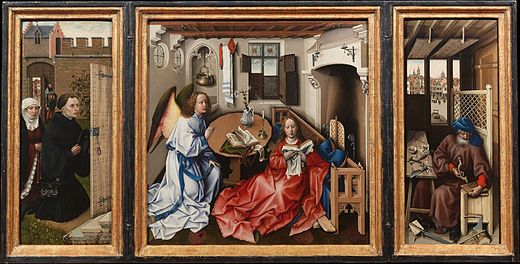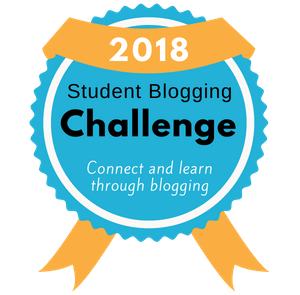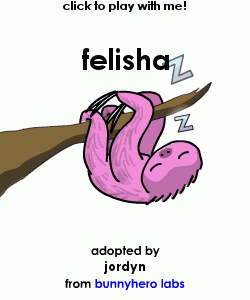皆さん、こんにちは, that means hello friends in Japanese, I’m really running out of ways to start these posts, seriously. Anyway, it’s time to talk about the last unit we did in Humanities, the Renaissance. Like we start every post, here is the question of the unit, how did the renaissance influence western worldview? Yes yes, I know it’s another post about worldview, but worldview is everywhere so it’s kind of a part of everything. If you want to learn more about it check out my post about worldview, A religious worldview. But the last Humanities post I did, A Stitch in Time (literally), was about feudalism, which is what came before the renaissance, so go read that one to see how different the times were! Down below, we’ll talk about things like an intro, how the renaissance happened, and the people, technology, religion and politics during it. All of these things are split in to three categories, the change of ideas, spread of ideas, and impact of ideas. So, it’s about time we get started.
AN INTRODUCTION
To introduce the topic, let me explain the whole idea of the renaissance first. The renaissance was a point of time, 14th-17th century, when everything got flipped upside down. Art, science, maths, architecture, politics, religion, and even people. People were coming up with new ideas and actually executing them, instead of just following what everyone else says, they would come up with new theories. All of this happened in the Italian city states, now Italy. The Italian city states included places like Venice, Milan, and Florence. The Italian city states were the ideal place for the renaissance to take place because of it’s geography, climate, leadership, and social organization. The last big thing that will help you understand what the renaissance was, is patronage. Patrons helped promote Artists so they became famous and well known. More people would start buying their art, making them able to get bigger jobs. Those three things are kind of the basis of the renaissance, so if you want to learn more about it, check out this website:
CHANGE OF IDEAS
The first changing point of the Renaissance involved the people and the change of their ideas. There were three groups, or four I guess. The thinkers, the artists, and the mathematicians/scientists. They all flipped what was known about the world completely upside down, so, let me introduce you to the…. (drumroll please) THINKERS!!
THE THINKERS
The thinkers introduced the first ideas about Humanism. Humanism is the idea that an individual is more powerful than relying on God constantly. The humanists came from Christian religion and decided that they didn’t need to rely on God to do everything for them, they could use their own talents and knowledge to help them be successful. So imagine 2 people at a job, one man completely relied on God, and the other one was a humanist. They were both given the same task, the one man would have just said, “Hey, let me just sit back, God will figure this out for me”, whereas the humanist man would have figured it out with the things he knows and the skills he has. Humanists also believed that classical writings were very inspiring. Most people before had looked at these writings from a Christian perspective, but from the new Humanist point of view, they started noticing the political, social, and historical ideas and became interested. Though, these ideas and books were mostly for the wealthy, the thinkers wanted to make them available to anyone.
THE ARTISTS
Well, you see, the artists are a very broad group of people. There are painters, sculptures, architects, and even writers (people who write literature). So lets start with painters. Before the renaissance people painted pictures like this:
Plain, 2D, and just kind of boring. When the renaissance came around, they were influenced again by the Greeks and Romans, inspired by new humanist ideas about the beauty of an individual, human excellence. They started interpreting old subjects in brand new ways. They looked more realistic and 3D, natural, and more complex. They even painted pictures of…… naked people, which had never been done! They reflected on their past through paintings as well as the present.
Now, let’s move on to sculptures. In the Middle Ages sculptors were seen as craftsman not artists, they just did jobs for churches and usually didn’t even sign their work. But that all changed, sculptors became artists and became internationally famous for their pieces. Here is one called the Pietà by Michelangelo:
Architecture changed in the way that it became more focused on the classical civilizations, Greece and Rome. Wow! These people really liked there Greeks and Romans. The buildings started looking more dome-like and with lots of columns. Again, like sculptors, architects changed their low status from skilled labourer to talented artist. Here is the gorgeous church of San Lorenzo which was created in these times.
The last kind of category of artists are the writers. Literature in general was a completely new thing. Well creating it. Before, people just read literature but now they started translating and making books more accessible to everyone. Poetry blew up at this time, humanists started deciding to write down their thought and feelings, which would sound pretty crazy at the time. This is when poetry first became a thing and it just became more popular from then on.
THE SCIENTISTS AND MATHEMATICIANS
Back, before the Renaissance, the only way you could learn about maths and science was to read out of books people had already written. You weren’t encouraged to ask questions or do experiments…. ever, just trust what everyone else says. But, people didn’t listen, they asked questions and did experiments, they were curious!! The new process of experimenting lead to the scientific method, one of the greatest discoveries in science history.
When you look up at the sky, you have questions, right? Well imagine times before the renaissance when they knew little to nothing about space and our solar system, imagine not knowing the planet was even round. For years and years many people believed that the sun went around earth, this idea was introduced by a scientist named Ptolemy. But years later, after many questions, a man named Galileo changed the way people look at the world, completely changed their worldview actually, that the earth actually revolves around the sun. Here is a comparison to what people thought before to what it actually is:
- Old theory
- What it actually is
The next drastic change in sciences was medicine. Well, it actually wasn’t super durastic because they still used weird mixtures of random stuff (including lizards) for medicines and used weird practices such as blood-letting and applying leaches to bleed out the sickness. But they didn’t realize most remedies were right in front of them in nature. The biggest change that came to medical science was in surgery and anatomy. That brings us to out next topic. Anatomy. Knowledge about this topic became much greater because of people like Leonardo Da Vinci who would (*Ew*) dissect bodies, study them, and them draw images of what he saw, teaching people about the human body.
Now, for mathematics. What we do every single day and use every day in our life. Well, it became just as important in the Renaissance. People started realizing you needed math for everything, anything from trade to art.
SPREAD OF IDEAS
The next stage of the Renaissance, is the spread of all the ideas above So, how is this possible, how could you possibly spread so many different ideas all across Europe? Let’s see.
One way that these ideas were spread was through universities and Education. At this time, the first universities were starting to be created because of funding and donations through patrons and wealthy people. Humanists would teach at the universities, having conversation with students (always grown men), giving lectures and sharing ideas with them. Another way knowledge was spread was because of travelling celebrities. It’s kind of like, say, Selena Gomez, she goes on tours all over the world, sharing her music.
That’s what travelling celebrities back then did. They would travel around Europe teaching people about art, science, math, etc. The last big think that really helped spread ideas throughout Europe was the Printing press. You ask, well, what’s a printing press? It is a kind of like an old fashioned printer, veeeeeerrryyyyy old fashioned. It was able to print thousands of books in the time it used to take to print one. This spread ideas extremely quickly. Only rich people could even afford a book, therefore be able to read one? But the new invention of the printing press could print books in many different languages for cheap, spreading them across Europe, allowing not just first class, but middle class to be educated as well.
The last major part of the spread of ideas would be the protestant reformation. This happened when people like Martin Luther and Savanarola protested against the Catholic Church. They were not happy that the popes and priests were in first class eating steaks, extremely wealthy and could read the bible when ever they wanted, while people like them maybe got to eat one potato a day, and could not read the bible. Therefore, no one really knew wheat God’s true word was since the pope read it to them at Mass.This idea quickly spread to many people creating a whole new religion derived from Catholicism, the Lutheran church. People who followed Luther in his protest against the Catholic Church were called the protestants, creating the present name, the protestant church. But of course, the Catholics being very powerful, fought back, creating the catholic counter reformation. They tried to convert everyone to Catholicism, leading to a war between the two religions.
IMPACT OF IDEAS
So that’s what happened in the renaissance, that’s the big picture. But what came after? Well, most of these ideas influenced what came after. Ideas about politics and how to rule bled into late renaissance. There were civic humanists who believed that to be a true citizen, you studied politics and what a good leader was. They also believed a lot in the power of education and teaching which happened a lot in the renaissance. Humanists became teachers, teaching people about many different things, they even taught children instead of just adult males for the first time!
And you thought the protestants were done there, but no. They kept coming, challenging the Catholic Church, protesting and spreading to many different people, including priests. Protestant ideas were spreading faster than ever before. Depending on the ruler it swung back and forth between Catholic and Protestant. There were many nasty rulers, so nasty that even their own parliament went to war with them. Queen Elizabeth made the country unite later by making religion, Catholicism and protestant, kind of in the middle, she made it half and half. And then the glorious revolution happened, a king and queen came over from the Netherlands, they made the country permanently protestant.
Let’s zoom way forward in time to about, 2018, how has the renaissance impacted our Western worldview? Well it’s kind of even hard to imagine how much they have. They have impacted our politics, teaching us how a good leader should be….. and maybe how one shouldn’t be, how to be a humanist. Be curious, challenge the unknown, use your own skills to be great. You don’t need God to guide your every step! Another huge idea that came a bit later was that you can believe in any religion you want. All the different religions, (catholicism, protestant, etc.) was created but now we use all of them. Those are just a few examples, but ideas from the renaissance impact us everyday.
THE TRIPTYCH
So, everything that I talked about up there is put into a….. TRIPTYCH! Now what is a triptych you ask? Well, it is a form of art that was very popular during the renaissance. It includes three panels in which creates an image all together but could also be an image on it’s own. Here is a fairly famous triptych from around the renaissance time. You can tell because of the way it’s drawn:
For our triptych we had to create of work of art that showered the impact of the renaissance in three panels. Panel #1: The change of ideas. Panel #2: The spread of ideas. #3: The impact of ideas. I bet you never would have guessed! It took a couple drafts and a bit of critiquing until it was perfect. Here is the first one as well as some critique I got. (The white one is my old copy and the white one was part way through my current copy, we did a bit of peer critique):
Most people said it didn’t really flow, it didn’t work together as one photo, only individual ones. So I fixed up some things until is was perfect.
I think this looks really good, it flows well and tells a good story. In the first panel, the change of ideas, it shows a serf sitting in a small shack painting with other serfs outside of it. This represents that people had to be kind of conservative about their ideas, since there weren’t any humanist ideas flowing yet. If you skip the middle panel and take a look at the other smaller one, that is the spread of ideas. It shows books flying out of the church, which was also used as a place of education. There are people waiting in line, rich people, poor people, people of all kind to show that now books and education were available to everyone. There is also a piece of paper nailed to the church door, showing the reformation and Jesuit’s, the counter reformers walking in the distance. Now when you look in the middle panel, the impact of ideas, you see more modern things. You see people dressed as things like doctors, lawyers, etc to show that people are acting as an individual, using their own skills to be successful. If you look very closely at their costumes, you might also see symbols of many different religions, showing anyone can be any religion now. The columns that separate the different panels have a bit of pattern on it. That pattern is actually the ceiling of the Sistine chapel which matches the painting in the first panel, they are both by Michelangelo. That really represents how far art and everything else has come. Michelangelo could have just been a man painting for fun, but now look at him, his art is everywhere even today! I think this picture really shows just how much we have advanced but also how much we have borrowed from the past, it’s actually pretty cool if you take the time to think about it.
To conclude this post I would just like to say that this unit was probably one of my favourites. The renaissance was extremely interesting to learn about and super amazing to realize how unbelievable our past was. Let’s take one last look at our driving question, “How did the renaissance impact our Western Worldview?” Well, it’s simple. In every way possible. All the things I mentioned above, government, people, society and more show up in one way or another today.
~Jordyn


















Leave a Reply